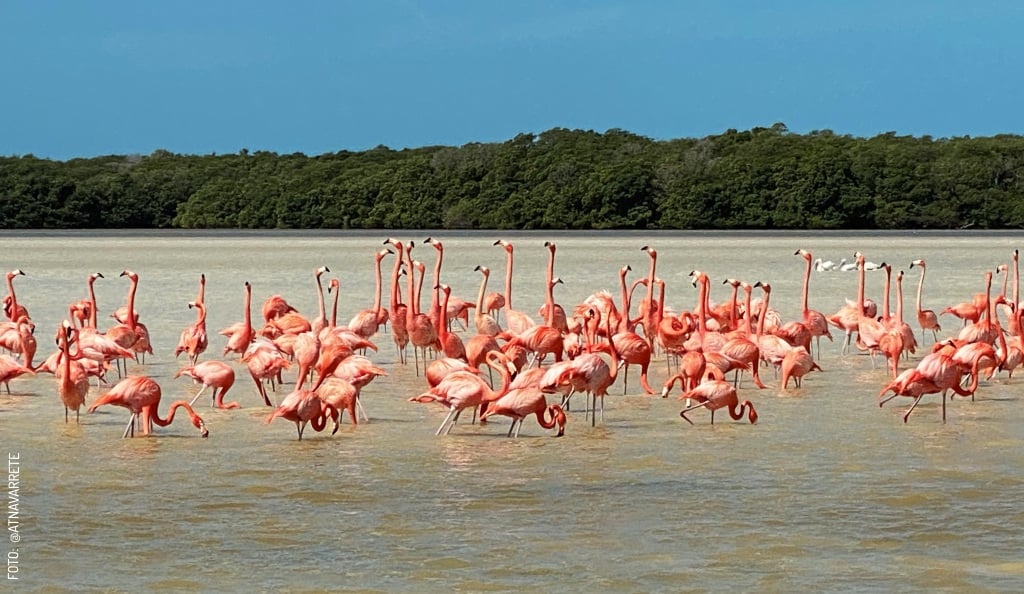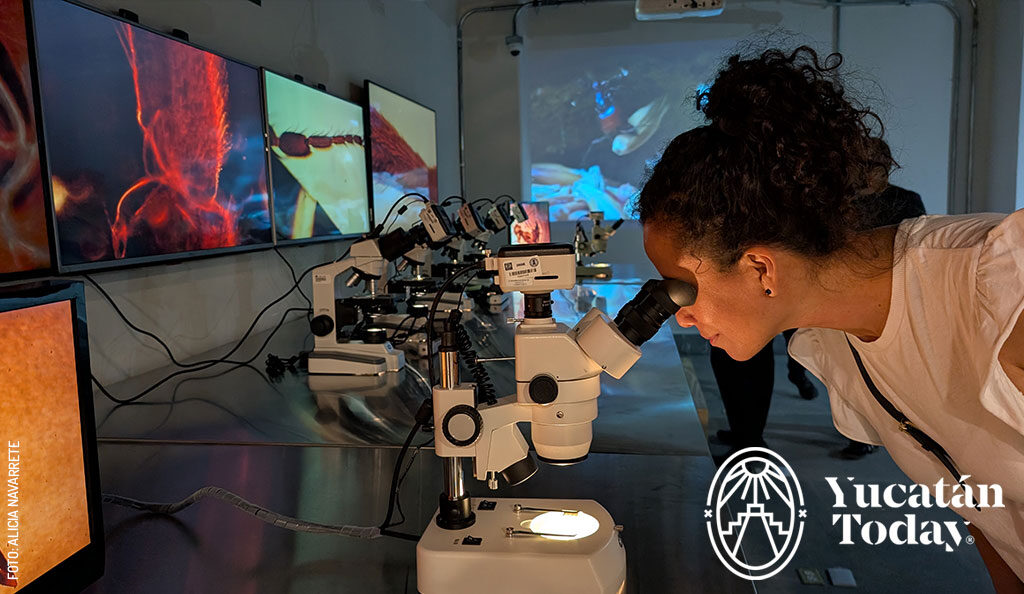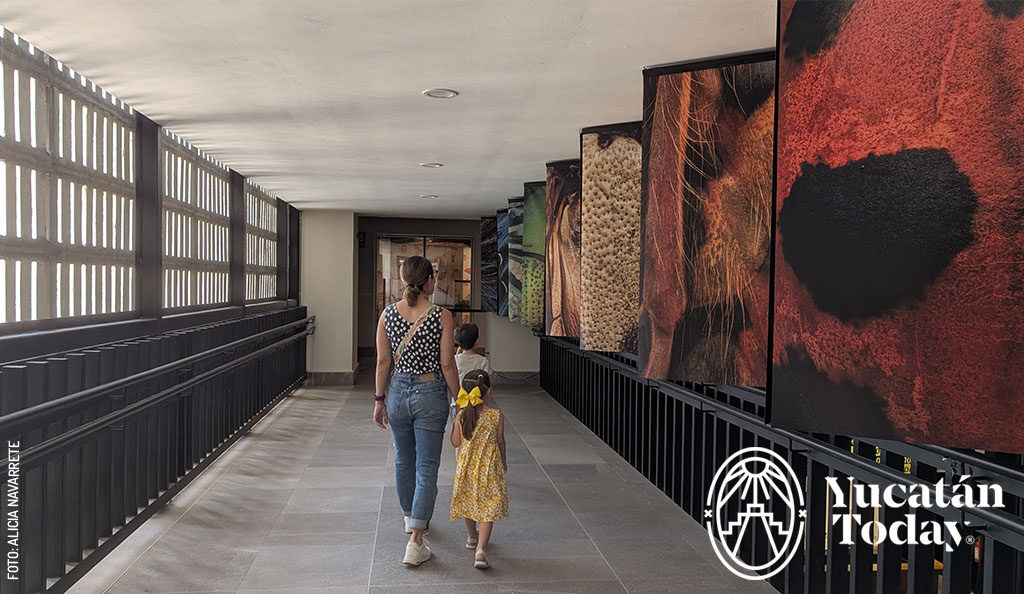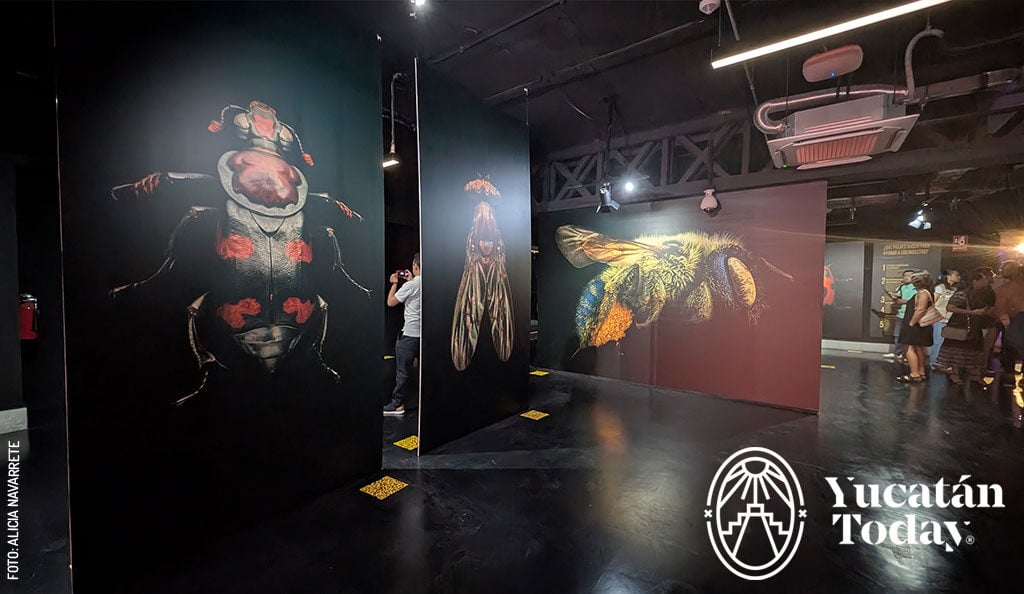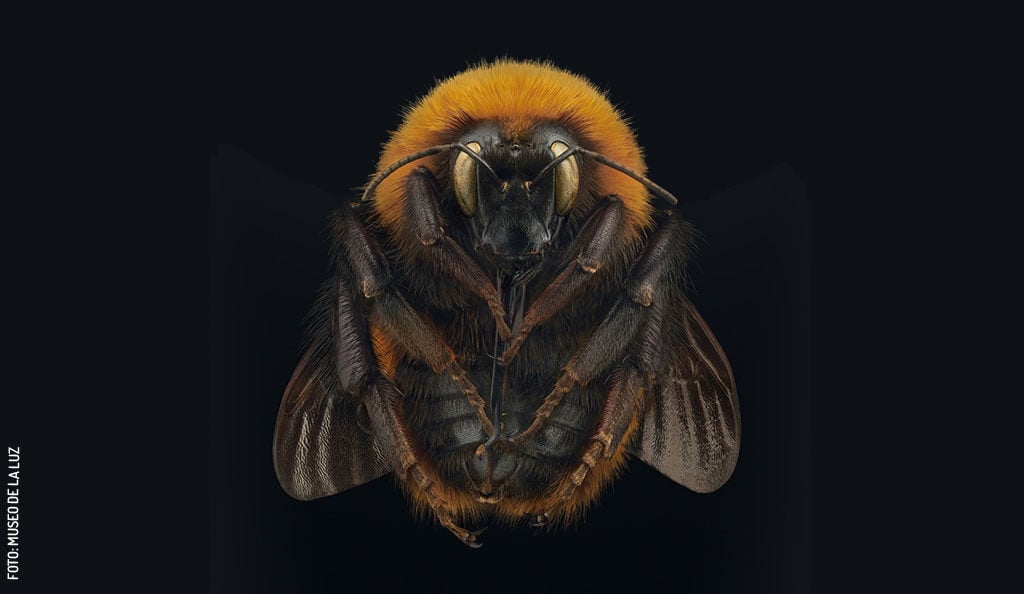
iik’el | Insects: Extinct and Endangered
This temporary exhibition is available until September 2025.
Nowadays, people—Yucatecos included—spend more time in air-conditioned spaces than enjoying nature, making it easy to forget that millions of insects share the planet with us. “Bugs” are very much an everyday reality of life in Yucatán, as anyone who has spent five minutes in any local garden knows.
According to the book Biodiversity and Human Development in Yucatán, as of 2010, at least 2,200 insect species have been recorded in the region, with estimates suggesting the actual number could be closer to 3,400. However, urban development, along with our general aversion to insects, keeps this biodiversity under constant threat. Whether you find them cute or creepy, bugs play a crucial role in sustaining life on Earth and ensuring human food security. As pollinators, pest controllers, food sources for other species, and in many other ways, insects are far more essential to us than we are to them.
iik’el | Insects: Extinct and Endangered exhibition at the Museum of Light, Mérida
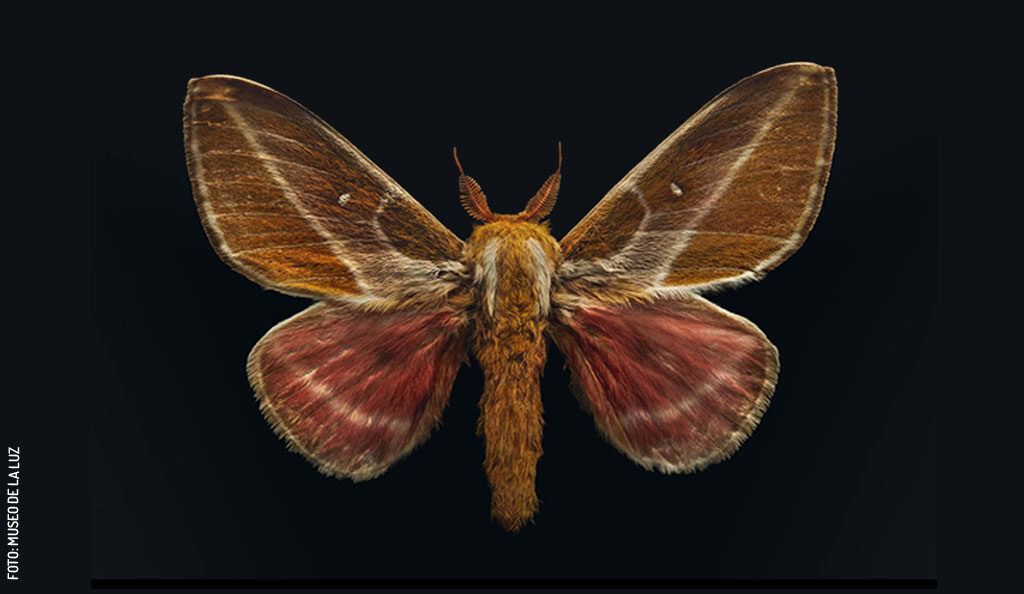
Because we cannot protect what we do not know, I encourage you to round up your little ones and visit the temporary exhibition “iik’el | Insects: Extinct and Endangered,” currently at the Museum of Light in Mérida. Available until approximately September, this display is an excellent opportunity to learn and spend quality time with family while escaping Yucatán’s scorching heat.
Brought from the American Museum of Natural History in New York, “iik’el | Insects: Extinct and Endangered” consists of three main sections. The first room features macro photographs of 40 extinct and endangered insects from around the world. Each image, standing 2.5 meters tall (8 ft), comprises over 10,000 microscopic photographs, offering a unique glimpse into the delicate beauty of these tiny creatures.
One distinctive feature of this room is the absence of printed labels for the images. Instead, visitors can access information via audio guides (which can be played on their own devices through Spotify using the museum’s WiFi) or by scanning the QR codes on the floor for the written descriptions. The guides are available in Spanish, Maya, and English.
If you’re visiting with young children, keep in mind that the images alone might not hold their attention for long. My six-year-old nephew was briefly engaged by reading the displayed information about the importance of insects aloud, but he needed some extra interaction and guidance to stay interested. If your kids get distracted easily, be ready to point out different details in the photographs and spark their curiosity to keep them engaged.
Insects on paper
The next stop on the tour is on the second floor. Here, the most curious visitors will have the chance to look through the microscopes for a (literal) close-up view of an insect’s leg and a mosquito. There is also a collection of Yucatecan insects–mainly from the southern part of the state–that can be examined using powerful magnifying glasses. In the same area, you’ll find a small workshop where children can “design” their own paper insects by combining different pre-cut pieces specially prepared for them by the museum’s friendly staff. This hands-on activity is highly educational and suitable for children as young as 3 or 4 years old.
Living Sanctuary
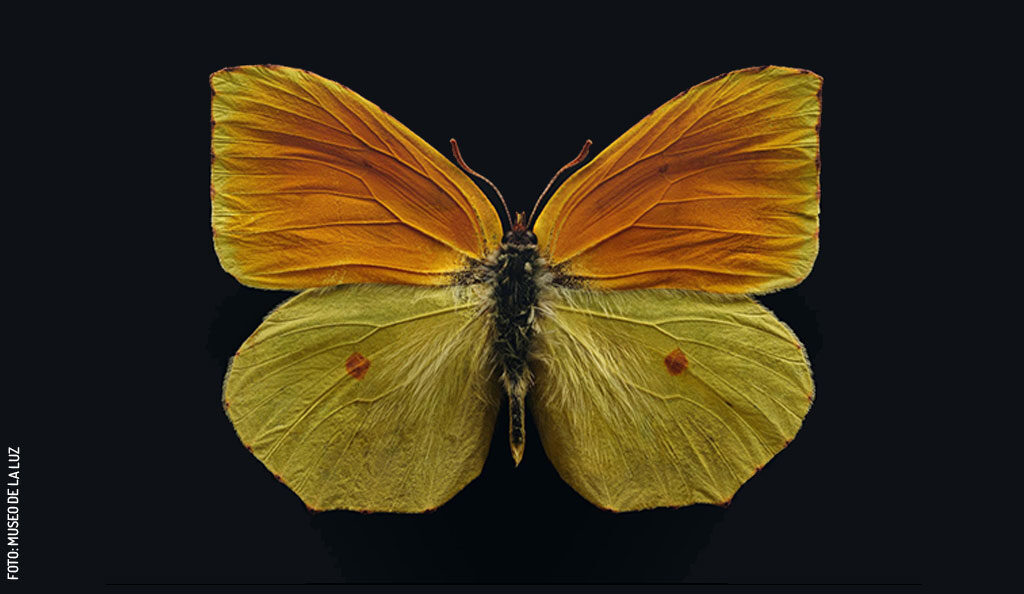
However, the highlight for most kids will likely be the Living Sanctuary. As the name suggests, this is a small room that houses various fascinating insects, including several species of praying mantises (such as the dead leaf mantis), stick insects, a family of ladybugs, beetles, carpenter ants, and more. The biggest challenge here is making sure children don’t get too excited and start shouting. As the room’s guide explained, loud noises can stress insects.
An extra stop: The library and radio booth
As you exit the Living Sanctuary, to your left, you’ll find the museum’s library. Designed as a cozy space for relaxation, it offers a great selection of books suitable for all ages–whether your little ones prefer reading on their own or you’d like to read to them. While all books have an educational and scientific focus, you’ll also find storybooks, activity books, and even cookbooks. The current selection on display is centered around insects, providing a fun way for kids to reinforce what they learned in the previous exhibition rooms.
Before leaving, be sure to check out the radio booth at the back of the library. It broadcasts live within the museum and offers children the chance to chat with the host about what they saw, what they learned, and what they enjoyed the most from the visit. My niece and nephew absolutely loved this part of the tour.
The fun doesn’t have to end there. The Museum of Light Mérida is located right in La Plancha Park, making it the perfect spot to continue with some outdoor activities. And if you’re feeling hungry, the Culinary Market is just a short walk away–ideal for grabbing a delicious snack. Enjoy!
Museo de la Luz
Calle 50 x 43
Parque La Plancha, Centro
Tue. - Sun., 9 am - 1 pm and 4 - 8 pm
Admission Prices:
Foreign visitors: $100 pesos
Mexican nationals: $60 pesos
Yucatán residents: $50 pesos
Students and seniors: $25 pesos
People with disabilities: Free
Free admission for everyone on Tuesdays.
First published in Yucatán Today print and digital magazine no. 449, in May 2025.

Author: Alicia Navarrete Alonso
As a kid I heard that there's more to see than can ever be seen and more to do than can ever be done, so I set out to try. I'm passionate about knowledge and I love to share whatever my own is.
In love with Yucatán? Get the best of Yucatán Today in your email.
Don't miss our best articles and the monthly digital edition before anyone else.
Related articles
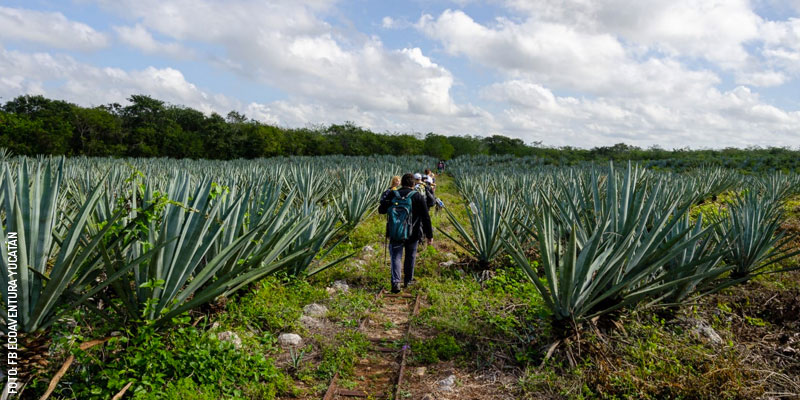
Hiking in Yucatán: A Beginner's Guide
There’s a special kind of magic that unfolds as we walk the trails of the Yucatecan lands, much like the Maya have done for centuries.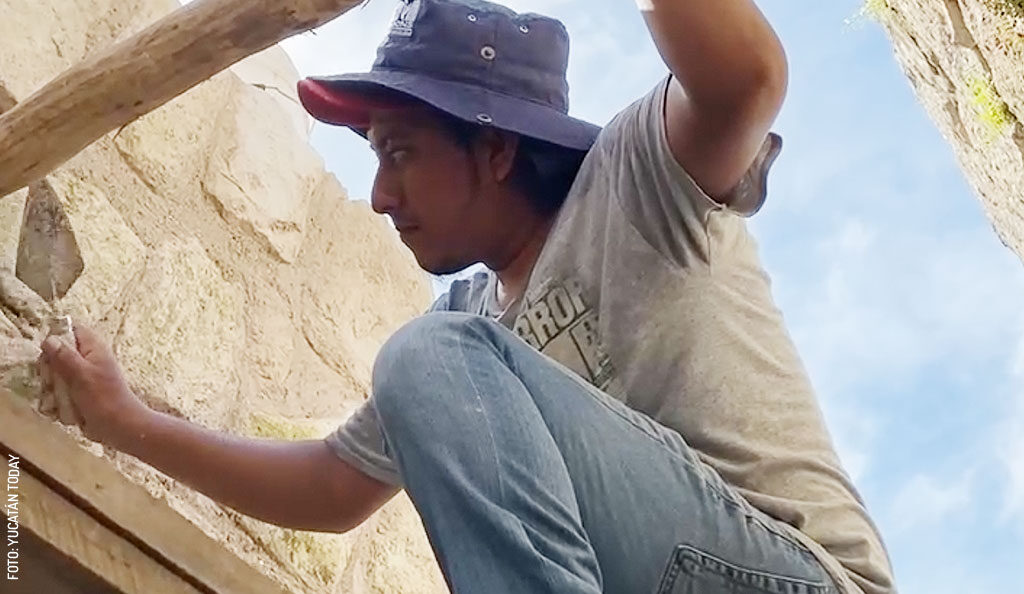
The Importance of Lime in Yucatán
Lime is made by burning limestone at high temperatures to dehydrate it. This creates quicklime, a caustic and delicate material.